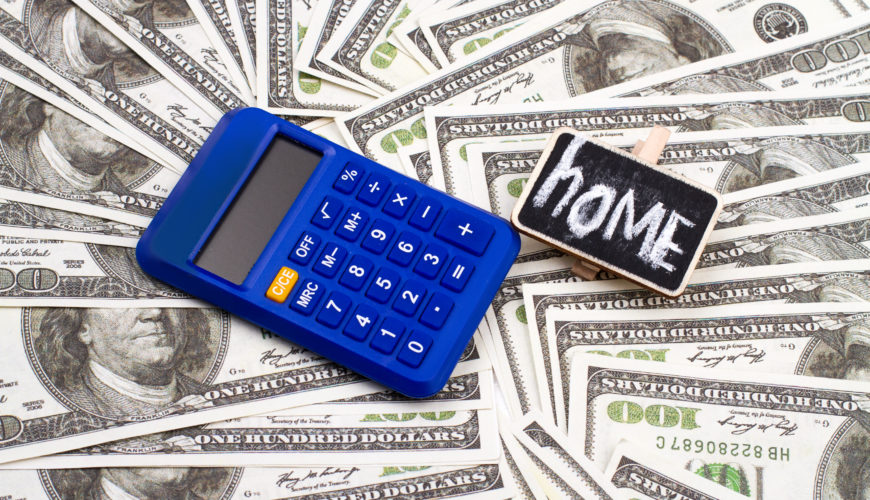In the world of real estate, refinancing is a popular option for many investors as well as regular buyers. Refinance is the process of replacing an existing mortgage with a new one while making sure you get the better deal this time around. Refinancing can enable you to decrease your monthly payments, remove or add borrowers from the loan obligations, and if you do it at the right time, you can sign on at a lower interest rate.
You can refinance your mortgage to the same amount and negotiate new terms, which is called rate-and-term refinancing, or you can refinance your mortgage for more money. Getting your mortgage’s value plus cash is called cash-out refinancing and like everything else comes with pros, cons, and requirements.
If you are thinking about whether or not it is the right step for you, here are some facts and figures about cash-out refinancing and advice on when the right time to do it is.
What Is Cash-Out Refinance?
Cash-out refinance is the process of replacing your old loan with a new and larger one. This way you cover your mortgage and get the cash difference paid to you by the lender. This means that you would be repaying more, but you can get better interest rates, plus it is somewhat easy to access the cash.
Let’s say you signed on your existing mortgage, you took $300.000 and after paying it off for a few years, your mortgage balance is $100.000 right now. Refinancing using the rate-and-term option would mean taking on a new loan under more favorable conditions to cover just the mortgage balance of $100.000.
Deciding to get a cash-out is different because you use your home as collateral for a new loan with the addition of liquid assets. That additional money that you borrow on top of your mortgage refinance is tax-free cash treated just like a personal loan. What you do with that money is your personal decision, but remember that it makes your mortgage payoff higher than your house’s worth, so spend wisely.
The amount of cash you can get depends on your financial history, your house’s value, and the state’s requirements and limits. Cash-out refinances in California will not have the same process as the ones in states with less expensive houses on the market and different requirements.
If you decide to take out cash-out refinance, the first thing you should do is find a lender that will work with you and get you a fair deal. The lender would do the underwriting analysis using the data you provided – the balance needed to pay off your previous mortgage and your credit score.
So, in the hypothetical situation when you have an existing mortgage balance of $100.000, your lender will offer you, based on your financial history, up to 125% of your home’s value. However, that loan would be significantly larger and could be a burden to the home budget in the long run.
That is why banks usually lend out up to 75% of borrowers’ home value. Your $300.000 home can grant you a $225.000 cash-out refinance. When you cover your balance, you are left with $125.000 in cash.
Requirements for Cash-Out Refinance

Since cash-out refinancing is a collateral loan and a much higher risk for the lender, there are stricter requirements throughout the application process. Every lender has its own set of requirements, but all are similar and all are more stringent than the requirements for the regular refinance.
You need a credit score to be a minimum of 620, whereas if you were to take rate-and-term your credit score could be 580. Your debt to income ratio should be less than 50%, meaning that your monthly debt payments should not take more than 50% of your monthly income.
Lenders will require you to show proof that you have sizable equity in your home if they were to refinance you with the cash-out. The amount of your equity is equal to the value of your house minus the amount owed to your lender. So you would have to have paid significantly before you could refinance. The less you owe to the previous lender, the more money you can cash out.
Requirements are somewhat less strict for veterans of the US army, so look into cash-out refinancing if you have any military experience.
When Should I Refinance My Mortgage?

Cash-outs are not always the best option, but in some cases, it is a smart move. If you have a great credit score these loans can help you get your budgeting in order, so you can focus on investing.
If you were to make some improvements to your home, consider cash-out refinancing. Not only will you potentially increase the value of your home, but you can finance the renovation with the leftover cash. If you do not have the money in your hands, but your house is due for an upgrade, a cash-out is a low-cost way to make that happen.
Cash-outs can be used to consolidate your debt. Let’s say you have to pay a student loan, a mortgage payment, and a personal loan. Each month there are three separate installments with added interests. If you were to take out a cash-out you could pay off those other two debts, or at least significantly decrease them. Ideally, you could pay those loans with a more favorable interest rate all in one monthly payment.
A good time to refinance with a cash-out is when the interest rate gets low. This is what had happen during the first year of the pandemic, when the interest rate got historically low, down to 2.7%.
Financial advisors advise freeing up your money out of your property and investing it. You can invest it to create more capital, or build your future funds, such as college and retirement funds. You can do whatever you want with the freed-up money, but experts advise against covering your consumer debt or spending it on unprofitable things (new car, better phone, etc.)
Are There Downsides to Cash-Out Refinance

Cash-outs are loans that have their downsides, but whether or not the downsides will affect you depends on your ability to manage your home budget. They come with higher interest rates than regular refinancing, and you have to pay extra points, but that is why the requirements are stricter.
The risk of foreclosure is higher because you are putting your home as collateral. In case you miss your mortgage payment you can lose your home. Another downside is that it is a time-consuming process that can last for months. If you need to free up the money urgently, to fix your home after a natural disaster, for example, you would need to wait for the process of underwriting to be done, which can take at least a few weeks.
Another thing to bear in mind is the closing costs that go from 2% to 5% of your loan’s value. When you decide to refinance with a cash-out, be prepared to set off some of that freed-up cash for a closing cost.
And in case you wanted to take more than 75% to 80% of your home’s value, you would need to pay private mortgage insurance. Those payments are collected annually throughout the lifespan of your loan. That means paying 0.55% to 2.25% of your loan’s amount – per year.
Final Piece of Advice
There are alternatives to cash-outs, but any time you tap into your home equity be careful what you do with that money. Covering unsecuritized debt with a securitized debt is generally discouraged because it can lead to foreclosure.
It is also ill-advised to spend the cash-out on things that will not bring you financial gain in the future – buying a car, a phone, taking a vacation, etc. Having a good plan for how to spend that money can protect you from all the downsides listed above.




